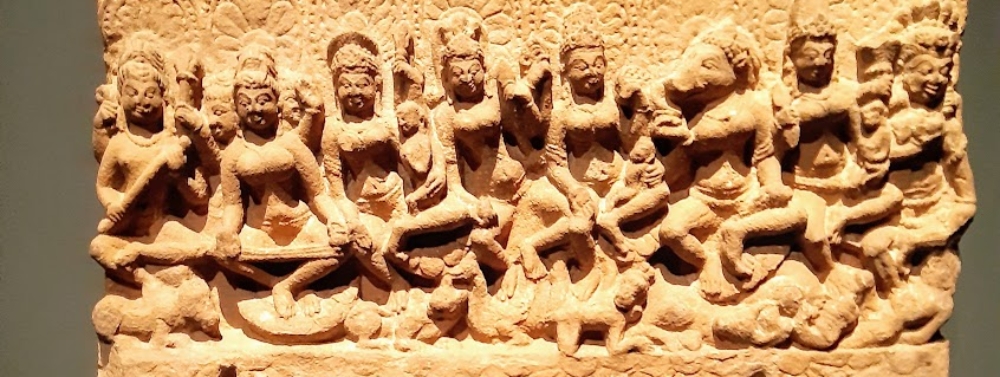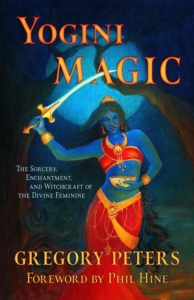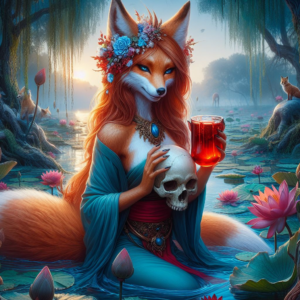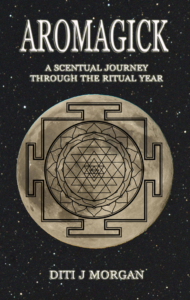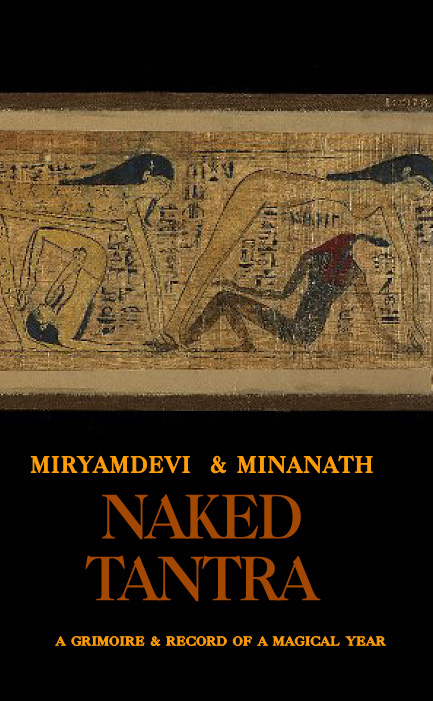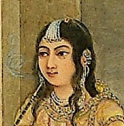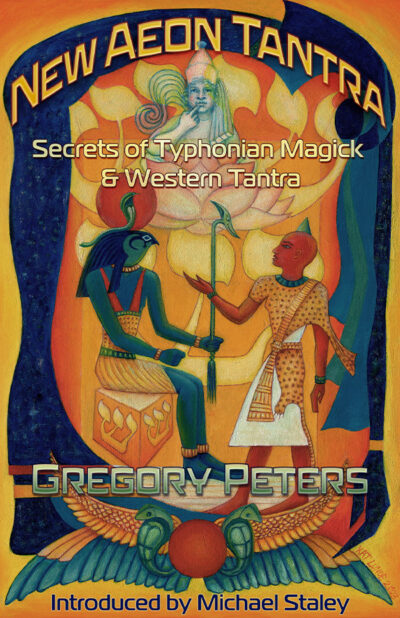
In a world increasingly craving authenticity and deeper connections, the spiritual landscape is evolving in fascinating ways. New Aeon Tantra: Gregory Peters’ Fusion of Eastern and Western Spirituality is a groundbreaking approach crafted by visionary author and teacher Gregory Peters. This innovative fusion of Eastern wisdom and Western philosophy challenges traditional boundaries, inviting seekers to embark on a transformative journey towards self-discovery and holistic harmony. Whether you’re a seasoned practitioner or just curious about what spirituality can offer in today’s fast-paced society, join us as we delve into the heart of New Aeon Tantra. This unique synthesis promises enlightenment and practical tools for everyday living.
Introduction: New Aeon Tantra: Gregory Peters’ Fusion of Eastern and Western Spirituality
In a world where spirituality often feels fragmented, Gregory Peters emerges as a bridge between ancient wisdom and modern practice. His book, New Aeon Tantra, invites readers to explore profound concepts blending Eastern philosophies with Western magical traditions. With roots in Tantra’s rich heritage and Thelema’s rebellious spirit, this work does more than educate; it transforms how we perceive our spiritual journeys.
Gregory Peters is a renowned scholar and practitioner of Tantra, Thelema, and other esoteric traditions. He has studied and practised these disciplines for over 20 years, and his work reflects a deep understanding of their core principles. Peters is the founder of the Ordo Sunyata Vajra, an esoteric order that seeks to synthesise Eastern and Western spiritual practices.
Peter’s writing style is clear and easy to understand, making complex ideas comprehensible for readers at all levels. His approach to spirituality is practical and adaptable, encouraging individuals to find their unique path rather than conforming to rigid belief systems.
Gregory Peters, a teacher, author, and spiritual guide, inspires many through his books, lectures, workshops, and retreats.
New Aeon Tantra offers a modern interpretation of ancient wisdom traditions and is essential for anyone seeking spiritual enlightenment.
What is Tantra: Explaining the concept and its origins
Tantra is an ancient spiritual tradition that emerged in India around the 5th century. It intertwines philosophy, ritual, and meditation to foster a deeper connection with the self and the universe.
At its core, Tantra views reality as interconnected. This perspective encourages practitioners to embrace life in all its forms—physical, emotional, and spiritual. Rather than shying away from desires or worldly experiences, Tantra invites exploration of them for personal growth.
The roots of Tantra can be traced back to texts like the Vedas and Upanishads. However, it evolved significantly through various schools of thought over centuries. Hinduism and Buddhism both adopted elements of Tantric practice but adapted them according to their unique philosophies.
This rich tapestry has led to diverse interpretations across cultures while maintaining its foundational goal: liberation through conscious awareness.
Tantra places a strong emphasis on understanding and working with energy. This includes the flow of prana (life force energy) throughout the body, as well as the exchange of energies between individuals and the universe. Through practices such as breathwork, meditation, and mantra chanting, Tantra aims to harness and direct this energy for spiritual growth.
One of the key concepts in Tantra is the union of masculine and feminine energies. This is often depicted symbolically through the image of Shiva (male) and Shakti (female) in a divine dance. Practitioners strive to balance these energies within themselves, acknowledging that both are necessary for wholeness and true enlightenment.
Another important aspect of Tantra is its approach to sexuality. While many people associate Tantra solely with sexual practices, it encompasses much more than that. Tantra sees sexuality as a natural and vital part of the human experience that can be used for spiritual growth when approached with intention, awareness, and unconditional love.
In essence, Tantra is a path towards greater self-awareness and connection with the universe. It offers tools for personal transformation and spiritual evolution while emphasizing embracing all aspects of life with mindfulness and reverence.
The New Aeon: Understanding the connection between Tantric and Thelemic traditions
The concept of the New Aeon is a central theme in both Tantric and Thelemic traditions. It refers to a new phase in human evolution and consciousness, which was prophesied by Aleister Crowley and other spiritual leaders. This new era is defined by a shift toward self-discovery, individualism, and the realisation of the divine within oneself.
Tantra, an ancient Indian spiritual tradition, emphasises the union of opposites as a means of achieving enlightenment. This includes uniting the masculine and feminine energies within oneself, as well as merging with the divine energy or consciousness. Tantra also values experimentation and exploration as a way to break free from societal norms and limitations.
On the other hand, Thelema, founded by Aleister Crowley in the early 20th century, focuses on finding one’s true will or purpose in life. It also promotes self-knowledge and forging a personal connection with divinity through ritual practices.
Gregory Peters’ philosophy of New Aeon Tantra combines elements from both Tantric and Thelemic traditions to create a unique approach to spirituality. His teachings emphasise embracing both light and dark aspects of our being to fully integrate all parts of ourselves.
Peters asserts that this integration is necessary for reaching true enlightenment in this new age. By understanding our duality and working towards unifying it, we can awaken our true potential and purpose in life.
Another significant aspect of New Aeon Tantra is its focus on sexual energy as a powerful force for transformation. This aligns with traditional tantric beliefs about harnessing sexual energy for spiritual growth.
Through various practices such as meditation, ritual magic, creative expression, breathwork, and sacred sexuality rituals; practitioners can access their inner power to manifest their desires and connect with the divine within.
Moreover, New Aeon Tantra embraces technology and modern advancements as tools for spiritual growth. This is in line with the concept of the New Aeon, which is said to be characterised by rapid progress and change.
The fusion of Tantric and Thelemic traditions in New Aeon Tantra offers a unique perspective on spirituality that embraces individualism, self-discovery, and harnessing inner power through integration. It provides a powerful framework for navigating this new age of human consciousness.
Gregory Peter’s Unique Perspective: Detailed analysis of how this book differs from other works on Tantra
Gregory Peters offers a fresh lens on Tantra, setting his work apart from traditional texts. While many authors focus solely on the sensual aspects of Tantric practices, Peters delves into its philosophical roots. He interweaves concepts of consciousness and liberation throughout the narrative.
His approach is remarkably integrative. By marrying Eastern philosophies with Western spiritual frameworks, he creates a dialogue between diverse traditions. This fusion invites readers to explore their own beliefs in new ways.
Unlike other works that may gloss over complexities, Peters encourages deep reflection and personal insight. His writing challenges the reader to engage actively with these ideas rather than passively consume them.
Key Themes Explored: Highlighting important ideas and concepts discussed in the book such as liberation, consciousness, and magickal practices
At the heart of New Aeon Tantra lies the theme of liberation. Peters invites readers to shed societal constraints and explore true freedom through Tantric practices. This journey isn’t just physical; it’s an awakening of the spirit.
Consciousness emerges as another vital concept. Gregory emphasizes expanding awareness, allowing individuals to tap into deeper layers of their being. The exploration leads to profound self-discovery and transformation.
Magickal practices make a striking appearance too. Here, Peters intertwines ritualistic elements with spiritual pursuits, showcasing how intention can shape reality. It becomes clear that these rituals are not merely performative but deeply imbued with meaning.
Throughout the book, these themes resonate harmoniously, inviting practitioners to embrace a holistic approach towards spirituality that transcends cultural boundaries and personal limitations.
Eastern and Western Influences: Examining the fusion of Eastern Tantric practices with Western Thelemic principles
The fusion of Eastern Tantric practices with Western Thelemic principles creates a fascinating tapestry of spirituality. In New Aeon Tantra, Gregory Peters delves into this intersection, revealing how these seemingly disparate traditions can harmonise.
Tantra emphasises experiential knowledge and the sacredness of energy within the body. It invites practitioners to explore their consciousness deeply. This approach is complemented by Thelema’s focus on individual will and personal empowerment.
Peters illustrates how rituals from both traditions can coexist, enriching spiritual journeys. For example, visualisation techniques in Tantra align seamlessly with Thelemic magickal practices that harness willpower for manifestation.
This blending encourages openness to various pathways toward enlightenment. As readers engage with these concepts, they discover tools for greater self-awareness and transformation beyond traditional boundaries.
Personal review of ‘New Aeon Tantra’
New Aeon Tantra by Gregory Peters, is the book I’ve been searching for a long time. Gregory’s clear and reflective writing style, combined with his extensive knowledge of the Tantric tradition, guides the practices within this unique magical system.
One of the strengths of this book is Peters’ clear and concise writing style. He effectively communicates complex concepts without overwhelming the reader or losing their interest. He avoids using complicated or obscure language. which can be off-putting for some readers.
Furthermore, Peters dives deep into the history and origins of tantra while still making strong connections to contemporary life. He includes personal anecdotes and reflections throughout the book which adds a level of authenticity to his teachings.
One particular aspect that stood out for me while reading New Aeon Tantra is how Peters emphasises self-discovery rather than blindly following dogmas or rituals. He encourages readers to find their own path towards enlightenment through introspection, mindfulness, and meditation. This approach sets this book apart from others in its genre as it promotes critical thinking instead of blind faith.
New Aeon Tantra had a profound impact on me as a reader. It challenged my preconceived notions about tantra and introduced me to a more inclusive and diverse form of spiritual practice. Peters’ fusion of Eastern and Western spirituality is seamless, making this book a valuable resource for anyone looking to embark on their own spiritual journey.”
I would highly recommend New Aeon Tantra to anyone interested in exploring the intersection of Eastern and Western spirituality. It is an insightful and thought-provoking read that has the potential to significantly impact the lives of its readers.
Get your copy of New Aeon Tantra here
